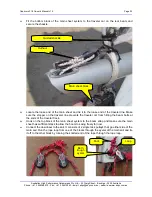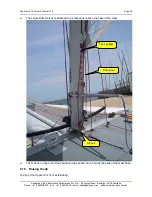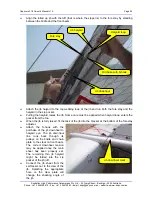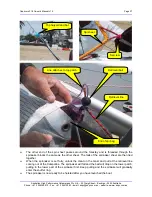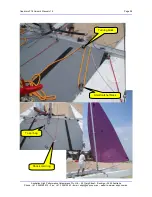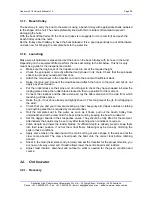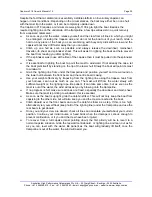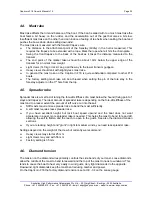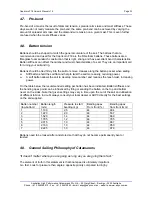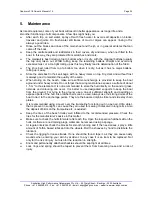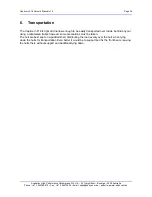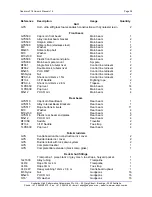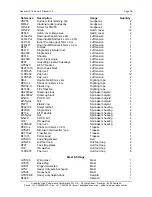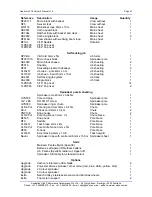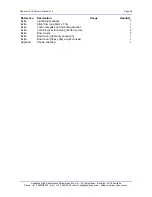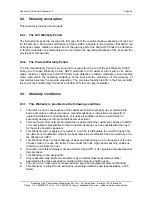
Capricorn F18 Owner’s Manual v1.2
Page 35
Australian High Performance Catamarans Pty. Ltd. – 50 Craig Street – Bendigo – 3550 Australia
Phone: +61 3 544369910 – Fax: +61 3 54412963 – email: ahpc@ahpc.com.au – website: wwww.ahpc.com.au
5. Maintenance
As like all equipment, care of your boat will result in better appearance, as longer life and a
smoother functioning of all components. A few tips might help you:
♦
After each trip on salt water, spray off with fresh water to avoid salt deposits on blocks,
traveller and joints. On fresh water still traces of mud or algies can appear, rinsing off is
always a good idea.
♦
Rinse out the blocks and lines of the main sheet and the jib, or in general all items that can
came off the boat.
♦
Keep the centreboards and rudderstock in their covers, dry and clean, when not fitted to the
boat. In this way, they are protected from scratches and dents.
♦
The mainsail is best rolled up top to bottom when it is dry, with the diagonal battens (usually
the top one) taken out. Whilst rolling, keep the remaining battens straight and avoid any
excessive twist, or a too tight rolling up as this may finally lead to delamination of the fabric.
♦
The jib is best rolled from top to bottom too when it is dry, but as it has no major battens,
rolling up is easy.
♦
Store the sails best in their sail bags, with no heavy items on top. Dry, dark and without frost
is always good to maintain the quality of the sails.
♦
When storing on the beach, make sure sufficient anchorage is provided to keep the boat
aground under heavy winds. Do not forget that a wing mast alone exposes a surface of about
1, 5 m² to the elements. It is not recommended to store the hull directly on the sand or grass;
osmosis and colouring can occur. It is better to use designated supports to keep the boat
from the ground. For tying to the ground, use a line of sufficient strength and padding on
exposed parts of the hull. Also ratchet belts can be used. Always use the strong points of the
boat to tie it to the anchorage points. They are the beams, dolphin striker and side stay chain
plates.
♦
It is recommended using a cover over the trampoline for storing out in open air. Ultra violet,
that is present in sunlight, can cause the yarn used for sewing to dissolve in long terms. Also
the deposit of birds on the trampoline etc. is avoided.
♦
Keep the tires of the beach trolley well inflated to the recommended pressure. Check the
tires for the manufacturer’s advice in this matter.
♦
Make sure to check the hulls for water after each trip. Open the inspection hatchets aft on the
hulls. As there are no draining plugs, water can be removed using a sponge
♦
At regular intervals check the blocks for smooth running and if the need arises, spray a little
amount of Teflon based lubricant into the wheels. Roll the sheaves by hand to distribute the
lubricant.
♦
Check the rigging for loose strands. If one should be found, tape it, as they can cause nasty
wounds when entering your skin by accident. In any case it is an item to be replaced. Not
only for the risk of injury, but also for the reduction in strength.
♦
Knots and permanently attached shackles should be kept tight at all times.
♦
Lock rings and spring should be taped to prevent them from becoming loose and a risk of
injury.



